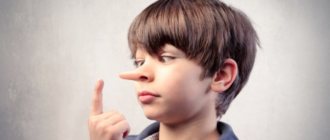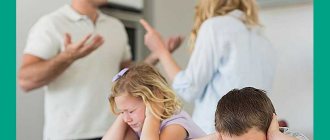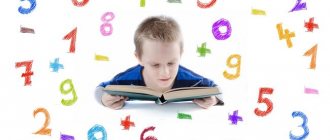Hyperactivity disorder (ADHD) is currently recognized as one of the most common behavioral disorders. As a rule, it is diagnosed in the first years of life, when hyperactivity . Many believe that this disease does not occur after adolescence. In reality, adults face hyperactivity.
Medical research shows that ADHD, even with early treatment, persists in 65% of those diagnosed with the disease. In some cases, psychiatrists and psychologists diagnose hyperactivity in a patient for the first time as an adult. This is often due to an error in the diagnosis earlier. They are often mistakenly attributed to manifestations of depressive disorders or anxiety syndrome. To successfully relieve symptoms, hyperactivity treatment is recommended at a very early age.
What to do if your child has hyperactivity
ADHD is most often diagnosed in childhood. Most often, parents of restless babies or teaching staff of children's educational institutions turn to specialists. The child understands others well. He hears and fulfills the requests of adults, but is too impulsive to accurately carry out the instructions received.
Adults often try to justify all the child’s pranks with this diagnosis. In reality, it is confirmed in no more than 3-5% of babies. Most of them are boys. The course of the disease differs:
- boys show a tendency to aggression and are characterized by hypertrophied disobedience;
- girls suffer from inattention, which can lead to learning problems.
In a third of children, ADHD goes away on its own during adolescence, without the use of specialized medical practices and medications.
Parents hold two polar points of view on the treatment of ADHD. About half consider the possibility of such a pathology to be far-fetched and refuse therapy, believing that the disorder will go away on its own with age. On the contrary, many parents exaggerate the danger of this disease for the development of the child. Hyperactivity requires mandatory monitoring by doctors and appropriate adjustment; in most cases, the pathology is successfully cured. Parents need:
- undergo a comprehensive examination to accurately establish a diagnosis;
- follow the specialist’s recommendations to create the most comfortable conditions for the child, carefully monitor the baby’s condition;
- fulfill all requirements, go through all necessary procedures;
- attend a consultation with a family psychologist.
A child with ADHD is characterized by an increased level of emotionality. He needs to be praised often, increasing self-esteem and self-confidence. In games, it is recommended to exclude competitive aspects that can lead to negative effects on the psyche. It is imperative to set boundaries for the child’s behavior. For example, give simple and executable instructions (take out the trash, wash your cup after yourself and other small tasks). The baby should grow up in the most favorable conditions, but clearly understand the boundaries of behavior so as not to become overly spoiled.
It is advisable to carry out diagnostics in a specialized medical center. Only in such a situation can a neurological disorder be confirmed, excluding simple increased activity or poor upbringing. A preliminary assessment of the condition can be carried out at a local clinic.
Treatment of hyperactivity in children
In medical practice, several options are used to treat hyperactivity in children. First of all, a thorough examination of the small patient is carried out. One of the main goals is to exclude potential pathology.
Further, experts prefer to prescribe non-drug courses. Psychological, pedagogical and psychological methods are used in the work. Participation in the treatment process of the whole family becomes an important condition. For this purpose, specialized family practices are used. This will allow you to establish contact with a child suffering from hyperactivity and develop a treatment program.
In acute situations and in the absence of effect in treatment using psychological classes and trainings, the following medications are selected:
- depressants are prescribed, Amitriptyline, Methylphenidate;
- Focalin, Vyvanse, Methylin contribute to increasing the level of concentration;
- glycine helps improve brain function;
- nootropic drugs Phenibut, Pantogam and others.
All of these medications are used simultaneously in the treatment of a child in exceptional cases. An individual therapy program is developed for each little patient.
Hyperactivity syndrome in children
It is possible to assume that a child has such a diagnosis at a very early age. Already in the first months the child sleeps poorly. He has an excessively violent reaction to noise and bright light. He reacts violently to hygiene procedures and gets overexcited during the simplest games. There is a slight lag behind the norm in psychomotor skills.
The presence of the disease can be determined at the age of three years. Psychologists mark this age as the first turning point. All kids become capricious and demanding. Children with hyperactivity have a delay in speech development, movements are fussy and chaotic.
The syndrome is accompanied by physiological disorders. The baby often experiences headaches, increased fatigue, and is diagnosed with enuresis and nervous tics.
In the preschool years, children with the syndrome are slower than their peers to learn new material, which is explained by their insufficient ability to concentrate. This situation continues after entering school. The lag in the assimilation of knowledge is caused not by low mental abilities, but by the lack of the ability to concentrate attention and fully remember all the new material.
Emerging problems provoke increased sensitivity and aggressiveness in the child. He becomes anxious and whiny, and phobias develop. As a child with ADHD grows up, self-esteem decreases and complexes arise. Without treatment, they can last a lifetime.
Diagnosis of hyperactivity
Children suspected of having ADHD are under the constant supervision of their attending pediatrician. In this case, a neurological diagnosis is not established earlier than 5-7 years. This is due to the developmental characteristics of preschool children. Child psychologists try to diagnose only after the completion of the transitional age crises of 3 and 7 years.
Diagnosis is carried out by a child psychologist together with a neurologist and pediatrician. Consultation with several specialists makes it possible to exclude other diagnoses that lead to increased activity and excitability. Also, during diagnosis, doctors reassure parents that their baby’s increased excitability, restlessness, is only a manifestation of character.
The baby’s condition is monitored from the first weeks of life. If hyperactivity is suspected, the doctor conducts a thorough analysis of the child’s behavior in everyday life.
Diagnostics includes three stages:
- a conversation between a child psychologist and the child’s parents;
- researching;
- obtaining advice from the pediatrician treating the baby.
To confirm the diagnosis in a hospital setting, EEG, REG, M-Echo, MRI are performed. Before conducting research, it is recommended to keep your child busy with an interesting game. You can give a mild sedative.
Typology of ADHD
The syndrome is classified into three types of course:
- Inattentive
, in which attention deficit predominates. Children (usually girls) with this type of disorder are absent-minded and withdrawn, and have a developed imagination.
- Hyperactive
, which is characterized by emotional instability, impulsiveness, and increased motor excitability (more often diagnosed in boys).
- And the most common type is mixed
, which combines symptoms of the first two types (impaired attention and increased activity).
Symptoms of hyperactivity
Doctors recommend conducting studies to confirm the diagnosis at the age of 5-12 years. The child has already gone through the first transitional periods and his character has been formed. But the first signs of this neurological disease appear much earlier. Parents are advised to pay attention to:
- the baby begins to hold his head up, crawl, walk, and sit earlier than his peers;
- sleeps less than normal and has difficulty falling asleep;
- They are highly sensitive to sharp sounds, bright light and other unexpected factors.
Children with ADHD often experience autonomic disturbances. There may be frequent stomach upsets and diarrhea. Allergic reactions often occur.
Among the neurological symptoms, the main one is impaired concentration. The baby has difficulty concentrating on one activity or subject. He avoids cyclical affairs. A child can become attentive only during one-on-one lessons with a teacher. Movements are chaotic. The baby's facial expressions are expressive. He speaks quickly, often slurring his words and jumping from one topic to another. The baby is impulsive and, when choosing a course of action, is guided only by his own desires. Indicative symptoms include frequent mood swings and a tendency to take risks.
All manifestations are associated with the vulnerability of the nervous system of a child with ADHD, which finds it difficult to process a large amount of information coming from the outside world.
Additional symptoms include:
- impaired communication with peers;
- the occurrence of problems in learning with a normal level of intelligence;
- delay in emotional development;
- low self-esteem that develops at an early age.
Hyperactivity also has its positive sides. Children are active, they are mobile and active. They perfectly “read” the mood of the interlocutor and for the sake of people
Scale of the problem
How many children like this are there in the world?
According to epidemiological studies in different countries, the incidence of this disorder ranges from 1-3% to 24-28%.
By age, this is approximately 5% among children under 18 years of age, 6% among school-age children, 3% among adolescents.
According to statistics, the leaders in the number of children with ADHD are the USA (4 - 20%) and Russia (7 - 16%). Then come China (1 – 13%) and Italy (3 – 10%).
*Data from “Hyperkinetic disorders” (ADHD) Koren E.V., Kupriyatnova T.A – Federal Medical Research Center for Psychiatry and Narcology named after V.P. Serbian Ministry of Health of Russia, Moscow, 2015.
The dispersion in statistics is due to the fact that different countries have different criteria and diagnostic methods.
Causes of hyperactivity
Among the causes of the violation:
- unfavorable course of the mother's pregnancy, including smoking and drinking alcohol during pregnancy;
- neurological disorders during intrauterine development, for example, fetal hypoxia, asphyxia at the time of birth, premature birth;
- the influence of the family atmosphere on the development of the child in the first months of life, frequent scandals of parents, malnutrition and other unfavorable factors.
The likelihood of hyperexcitability increases as the number of these factors that appear together increases.
Games with hyperactive children
- Games for developing attention
- "Catch - don't catch." The most famous game in this category is “Edible - Inedible”. The presenter throws the ball to the child and says the word. If this word means an edible object, the baby must catch the ball, and if it is inedible, then return it. By analogy with this, you can come up with many different games that will be interesting specifically for your child (for example, “Transport is not transport”, “Living - inanimate”, “Dangerous - not dangerous” and so on).
- "Pathfinders". Choose a small toy and hide it in the room, but so that it can be seen. To find the right item, the baby needs to be attentive and not be distracted by other things.
- “Ears on the Top of the Head” is a game aimed at developing auditory attention. Its essence is to hear which of the named words have a certain sound. For example, agree that you will say words, and the child should clap his hands every time he hears the sound “r”.
- Games to develop self-control
- “Freeze.” Turn on dynamic, fun music and invite your baby to dance. As soon as you press pause, the child should freeze in place.
- "Wait for the signal." This is a word conversation game. Its essence lies in the fact that the adult asks the baby various questions, and the child can begin to answer them only after a certain signal (for example, when you touch your ear with your hand or fold your arms over your chest).
- “I’m silent - I whisper - I scream.” The child’s task in this game is to perform all actions, focusing on the sign that the adult shows him. Agree with the baby on the conventions: for example, a sleep gesture - the baby should be silent and not move, a finger at the lips - speak quietly and move slowly, hands up - you can scream, run and jump.
- Games to relieve emotional and muscle tension
- “We draw with our fingers.” Ask your child to take a relaxed position and close their eyes. On his back or palm you can “draw” various figures, numbers, letters and other schematic images with your finger. The child must guess what you drew.
- "The wind is a breeze." Together with your baby, draw a strong wind and a weak breeze with your hands. This can be done to classical music, depending on its tempo.
- "Soap bubble". In this game, the adult pretends to be blowing a soap bubble, and the child “flies” around the room like a bubble. After the command “burst”, the baby must lie on the floor.
Diagnosis of hyperactivity
Such a diagnosis can only be made by a specialist after conducting a series of studies. In recent years, this neurological disorder has been identified as a separate pathology. The diagnosis is officially accepted in international medical practice.
Confirmation of the diagnosis indicates the presence of a chronic neurological disorder. Without the necessary treatment, it can last a lifetime. Without therapy, the disease develops in three directions:
- the child stops believing in himself and withdraws;
- he may experience serious mental disorders, he will begin to live in an imaginary world;
- cope with the pathology on their own, but with great difficulties.
Timely initiation of therapy will help correct the course of the pathology and make the prognosis favorable.
Correction of hyperactivity
It is important for parents to monitor their baby’s development from the first days of life. Especially in the case of the presence of negative factors that accompanied the bearing of a child and its birth.
A careful attitude towards the baby in the family will help eliminate ADHD. The home should have a calm and favorable environment. Parents are not recommended to raise their voice to the child or be overly demanding of him.
It is important to form adequate self-esteem in a child from a very early age, praising small actions successfully performed and calmly paying attention to possible mistakes made. They are inevitable, but you should not put too much emphasis on them, causing the child to feel guilty. The support of elders in all endeavors is important for a child. He should have a calm daily routine with the obligatory presence of daily walks with active games, the formation of habits in the field of proper nutrition helps in controlling hyperactivity.
Such careful attitude is required for any child, but the implementation of such corrective rules is mandatory in families with a hyperactive child. It is important for parents to regularly consult a doctor for behavioral diagnosis. In case of acute conditions, the doctor prescribes a set of corrective medications. Only specialists can prescribe any medications. Independent therapy in choosing a course of treatment is prohibited.
Who diagnoses ADHD and how?
Diagnosis is carried out by several specialists: neuropsychiatrist, pediatrician, neuropsychologist, speech therapist-defectologist. In addition to the medical examination, the child is monitored and parents are asked to get involved. Preschoolers are given oral psychological tests, and a symptom survey is completed by parents.
ADHD is diagnosed when:
- the presence of pronounced symptoms that do not go away within six months;
- constantly and everywhere showing signs of disorder (in kindergarten, on the playground, during a walk, and at home).
When making a diagnosis, it is important not to confuse ADHD with other conditions that can also affect behavior and development.
You can undergo training and obtain the profession of a neuropsychologist on our distance professional retraining course. You will master a new interesting direction and will be able to diagnose, treat and prevent ADHD and other disorders in the field of neuropsychology in children.
Hyperactivity in adults
For a long time, ADHD was considered a disease that occurs only in young patients and goes away as they grow older towards adolescence. Research in recent years has confirmed that hyperactivity can occur at any age. As a rule, diagnosis in adults is associated with an error in determining the causes of hyperactive behavior in early years. This caused errors in treatment. Sometimes the disease was simply not diagnosed.
Adult patients experience symptoms similar to those of the disease in childhood. Due to adaptation, most adult patients are characterized by increased excitability and hyperactivity. This leads to symptoms:
- difficulties when working according to instructions;
- patients are unable to maintain attention when performing monotonous and tedious actions;
- have weak organizational abilities;
- execute several processes simultaneously without completing the action;
- are forgetful when performing daily duties, may forget objects and goals;
- unable to control the volume of the voice or remain patient, for example, when standing in line;
- interrupting the interlocutors' statements;
- swiftness and variability of behavior;
- increased irritability.
Experts note other factors as well. A positive feature of ADHD in adult patients is high performance. They often successfully build a career, reaching significant career heights. The disadvantages include the occurrence of problems in interpersonal communication, which often interfere with maintaining a high quality of life. Including destructive interpersonal connections with low adaptation. Treatment for hyperactivity can begin at any age. Patients are prescribed corrective medications and undergo individual and collective psychological training.
Content
- ADD and hyperactivity: what is it Types of hyperactivity
- Biological factors
- Hyperactivity
- ADHD or not?
Hyperactivity in schoolchildren
During school years, ADHD causes problems with mastering the educational program. A low level of ability to maintain attention during lessons and a lack of willingness to concentrate while doing homework causes a significant decline in academic performance. Lack of control on the part of doctors leads to increased anxiety.
Schoolchildren suffering from hyperactivity fall into the category of unsuccessful students, despite the ideal state of intellectual abilities. The child becomes nervous and hot-tempered. His self-esteem decreases.
Useful tips
Photo: https://pixabay.com/photos/love-child-family-mother-momma-746678/
- Unified requirements. This rule applies to all children, but it is especially important for hyperactive children. Agree with your spouse and grandparents on common requirements for the child.
- Clear prohibitions. Information about restrictions and prohibitions should be brief and succinct. There is no need for long phrases, no need to say, no need to do. Explain what to do.
- Step-by-step instruction. There is no need to give lengthy instructions consisting of several steps. The child still won’t remember everything in its entirety. Break the task into several successive steps.
- Praise. Be sure to praise for success. Is your child less distracted? Completes homework without numerous pauses? Can't move in class? Celebrate these achievements.
- Organization of space. Organize a children's space where he will feel comfortable. Hyperactive kids are prone to “destruction” and the inability to put things in order. Remove all unnecessary things, teach them to put things in their places.
Manifestation of hyperactivity
People with this neurological disorder tend to:
- inability to concentrate on performing monotonous routine actions;
- a patient with ADHD is unable to concentrate while maintaining a conversation;
- he can be irritable and moody, prone to mood swings;
- Such people are characterized by impulsiveness and a tendency to take risks.
Diagnostics are necessary to identify pathology. Often these symptoms can accompany a certain eccentricity of a person who does not have neurological pathologies. They also accompany some complex psychiatric disorders.
An examination is recommended for an accurate diagnosis. This will allow us to develop an effective option for complex therapy that provides comprehensive and qualified care. Treatment of hyperactivity is carried out on an outpatient basis. In most cases, psychological therapy is carried out without the use of drugs or the use of drugs in minimal dosages.
Hyperactivity in preschool children
ADHD in children who have not yet reached school age has certain characteristics. Hyperactivity in patients is observed from a very early age, which indicates an innate predisposition to potential disorders. However, doctors do not recommend making a diagnosis confirming a neurological disorder before the age of 5-12 years.
This is due to the peculiarities of the formation of the psyche of a small child. Many children are characterized by increased emotionality, which does not indicate the presence of pathology. Additionally, behavior is affected by the first crises of adolescence, which a person experiences with varying degrees of severity during the period of approximately three and seven years. At this time, every child becomes capricious and begins to attract the attention of adults, becoming either too passive or hyperexcitable.
In preschool age, parents or teachers can only pay attention to a certain predisposition of the child to the future development of pathology. If symptoms persist for months and years, parents should carefully monitor the child’s behavior, pay attention to his communication with peers, and educational progress. Confirmation of the diagnosis is carried out only after a minimum of five years of age.
Hyperactivity syndrome is a pathology that, without proper treatment, can significantly worsen the patient’s quality of life at any age. This neurological diagnosis will be monitored by experienced specialists. The help of doctors and relatives ensures proper adjustment of the behavior of people suffering from ADHD.
When it appears
It is believed that hyperdynamic activity syndrome manifests itself most clearly in preschool (4-5 years) and primary school age (6-8 years). The child ends up in a children's group and cannot withstand the modern pace of learning.
All the signs of his hyperactivity immediately appear: the teacher or educator cannot cope with the child, he does not master the curriculum and other problems of his behavioral disorders.
However, the first signs of hyperdynamic syndrome can be detected in infancy. Such babies are very active and emotional: they get unstuck from their diapers, fall, if you just turn away for a moment, they sleep poorly, their sleep is superficial, restless, and they can scream all night for no reason.
As they grow older, the behavior of hyperactive children continues to “delight” their parents: they get out of playpens and strollers, often fall, get into everything, and knock over everything.
Babies are already 1-2 years old and active and overly mobile; mothers can barely keep up with them. They are not interested in games where you need to think, add, build. It is difficult for a hyperactive child to finish listening to a fairy tale or watching a cartoon; he cannot sit still.
What should parents do if they suspect their child has hyperactivity disorder?











